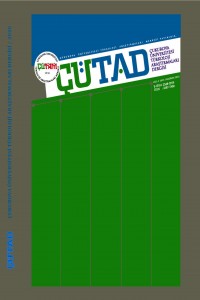Abstract
çalışmada Türkiye Türkçesinde ara ve orta kavramlarının dilbilgisel
işaretleyicileri gözlem ve tahmin yoluyla tespit edilmiş ve bu işaretleyiciler
yapısal ve anlamsal özellikleri bakımından değerlendirilmiştir. Yapısal
çözümleme işaretlerin söz(cük), söz öbeği, cümle veya söz kalıbı olup olmadıkları,
işaretleyicilerde köken dillerin neler olduğu bakımlarından yapılmıştır.
Çalışmada zaman zaman “kavram çözümlemesi” ifadesi kullanılsa da esasında
kavramın çözülemeyeceği artık bilim çevrelerinde genel bir görüş halini
almıştır. Buna göre, kavramlar ancak parçalara bölünerek ve dilbilgisel
işaretleri üzerinden anlamsal olarak çözülebilir. Burada da ara ve orta kavramları anlambirimcik çözümleme yöntemiyle ve
Martorella’nın “kavram çözümleme” modelinden yararlanarak incelenmiştir.
Kavramların en güçlü dilbilgisel işaretleyicileri ara ve orta
sözcükleri ve bunların türevleridir. Ancak, kavramlar uzak veya yakın başka
kavram alanlarının üyeleriyle de kısmi ve dolaylı olarak temsil
edilebilmektedir (iç, normal, standart, genel, ılıman, kabul edilebilir
vb.). Bu ve benzeri kavramların birtakım dilbilgisel işaretleyicilerle
betimlenmesi bir toplumun zihin yapısı konusunda da fikir verir. Bu çalışmada,
Türklerin neyi “arada” veya “ortada” düşündükleri tam olarak tespit edilmemiş
olmakla birlikte, ara(da) ve orta(da) kavramlarını hangi dış dünya
gerçeklikleri bağlamında oluşturdukları genel hatlarıyla ortaya konmuştur. Buna
göre Türkler iyi-kötü, yüksek-alçak, büyük-küçük, yeni-eski, var-yok,
siyah-beyaz, az-çok, belirli-belirsiz, başlangıç-bitiş, ilk-son vb. kavram
çiftlerini “aralayabilmekte” veya bu kavram çiftlerini
“ortalayabilmekte”dirler. “Aralanan” ve “ortalanan” kavramlar genellikle
niceliksel kavramlar değil, nitelikler ve durumlardır.
References
- Aksan, D. (1989). Kavram alanı-kelime ailesi ilişkileri ve Türk yazı dilinin eskiliği üzerine. Türk Dili Araştırmaları Yıllığı Belleten-1971. Ankara: Türk Dil Kurumu Yayınları, 253-262.
- Bozkurt, B. Ü. (2018). Kavram, kavramsallaştırma yaklaşımları ve kavram öğretimi modelleri: kuramsal bir derleme ve sözcük öğretimi açısından bir değerlendirme. Dil Dergisi, 169 (2), 5-23.
- Cin, R. (1971). Kavramlar dizini. Ankara: Türk Dil Kurumu Yayınları.
- Grünberg, T. (2006). Anlam kavramı üzerine bir deneme. İstanbul: 2. Baskı, Yapı Kredi Yayınları, Cogito.
- Hirik, S. (2017). Türkiye Türkçesinde söylem ve bilgi kipliği ilişkisi. İdil Dergisi, 6 (35), 1955-1966.
- Karataş Coşkun, M. (2011). Kavram öğretimi. Adana: Karahan Kitabevi.
- Kerimoğlu, C. (2011). Kiplik incelemeleri ve Türkçe. İzmir: Dinozor Kitabevi.
- Kılıç, F. (2009). Kavram analizi yönteminin kültür kavramının öğrenilmesine etkisi. e-Journal of New World Science Academy, 4 (4), 1381-1391.
- Martorella, P. H. (1986). Teaching concepts. Classroom Teaching Skills (J. M. Cooper, Yay.). Massachusetts: Healty and Company, 181-223.
- Nietzsche, F. (2019). Böyle buyurdu Zerdüşt (Murat Batmankaya, Çev.). İstanbul: 2. Baskı, Say Yayınları.
- Yüceol Özezen, M. (2005). Türkiye Türkçesindeki değişkenlerin eşdeğerliği. Çukurova Üniversitesi Sosyal Bilimler Enstitüsü Dergisi, 14, 403-414.
- Güncel Türkçe Sözlük (www. tdk.gov.tr, erişim tarihi: 23.04.2020).
Abstract
In
this study, grammatical markers of the consepts of between and the mid in
Turkish have been determined through observation and prediction and these
markers were evaluated in terms of structural and semantic features. Structural
analysis was made in terms of whether the markers are words, phrases, sentences
or fixwd expressions, and what are the languages of origin in the markers.
Even though the term “concept analysis” was sometimes used in the study, the
fact that the concept could not be solved has become a general view in
scientific circles. Accordingly, the concepts can be solved semantically only
by dividing them into pieces and through their grammatical markers. Here, the
concepts of between and mid are examined by semic analysis
method and by using Martorella's “concept analysis” model. The strongest
grammatical markers of concepts in Turkish are ara and orta words and their
derivatives. However, concepts can be represented partially and indirectly with
members of other distant or close concept areas (iç “internal”, normal
“normal”, standart “standard”, genel “general”, ılıman “temperate”, kabul
edilebilir “acceptable” etc.). Describing these and similar concepts with some
grammatical markers also gives an idea about the mind structure of a society.
In this study, it has not been determined exactly what the Turks think “in
between” or “in the middle”, but in which context they have created the
concepts of (ın) between and mid(dle) in the context of external world
realities. According to this, Turks can “space” concept pairs of good-bad,
high-low, big-small, new-old, have-none, black-white, more-less,
certain-ambiguous, start-finish, first-end etc. or they can “center” these
pairs of concepts. The “spaced” and “centered” concepts are usually not
quantitave concepts, but qualitative concepts and situations.
References
- Aksan, D. (1989). Kavram alanı-kelime ailesi ilişkileri ve Türk yazı dilinin eskiliği üzerine. Türk Dili Araştırmaları Yıllığı Belleten-1971. Ankara: Türk Dil Kurumu Yayınları, 253-262.
- Bozkurt, B. Ü. (2018). Kavram, kavramsallaştırma yaklaşımları ve kavram öğretimi modelleri: kuramsal bir derleme ve sözcük öğretimi açısından bir değerlendirme. Dil Dergisi, 169 (2), 5-23.
- Cin, R. (1971). Kavramlar dizini. Ankara: Türk Dil Kurumu Yayınları.
- Grünberg, T. (2006). Anlam kavramı üzerine bir deneme. İstanbul: 2. Baskı, Yapı Kredi Yayınları, Cogito.
- Hirik, S. (2017). Türkiye Türkçesinde söylem ve bilgi kipliği ilişkisi. İdil Dergisi, 6 (35), 1955-1966.
- Karataş Coşkun, M. (2011). Kavram öğretimi. Adana: Karahan Kitabevi.
- Kerimoğlu, C. (2011). Kiplik incelemeleri ve Türkçe. İzmir: Dinozor Kitabevi.
- Kılıç, F. (2009). Kavram analizi yönteminin kültür kavramının öğrenilmesine etkisi. e-Journal of New World Science Academy, 4 (4), 1381-1391.
- Martorella, P. H. (1986). Teaching concepts. Classroom Teaching Skills (J. M. Cooper, Yay.). Massachusetts: Healty and Company, 181-223.
- Nietzsche, F. (2019). Böyle buyurdu Zerdüşt (Murat Batmankaya, Çev.). İstanbul: 2. Baskı, Say Yayınları.
- Yüceol Özezen, M. (2005). Türkiye Türkçesindeki değişkenlerin eşdeğerliği. Çukurova Üniversitesi Sosyal Bilimler Enstitüsü Dergisi, 14, 403-414.
- Güncel Türkçe Sözlük (www. tdk.gov.tr, erişim tarihi: 23.04.2020).
Details
| Primary Language | Turkish |
|---|---|
| Subjects | Linguistics |
| Journal Section | Linguistics |
| Authors | |
| Publication Date | June 25, 2020 |
| Submission Date | May 2, 2020 |
| Published in Issue | Year 2020 Volume: 5 Issue: 1 |


